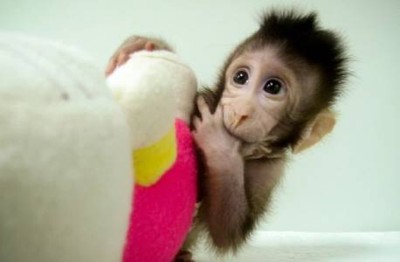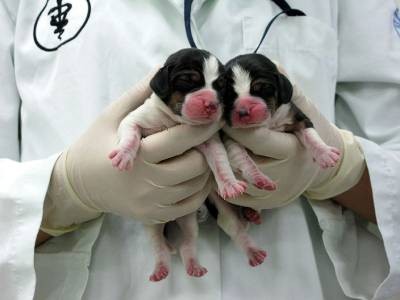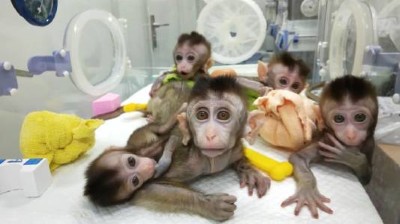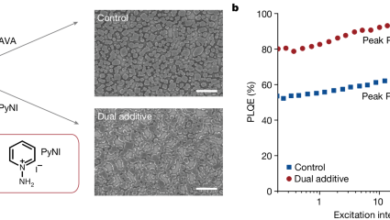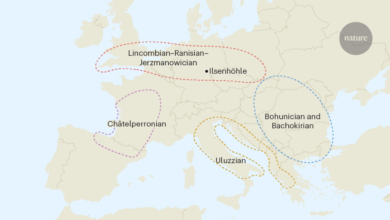Cloned rhesus monkey lives to adulthood for first time


The cloned rhesus monkey, named ReTro, is the first to survive to adulthood.Credit: Qiang Sun
For the first time, a rhesus monkey (Macaca mulatta) cloned in the laboratory has lived into adulthood — surviving for more than two years so far.
The feat, described today in Nature Communications1, marks the first successful cloning of the species, and was achieved using a slightly different approach to the conventional cloning technique used to clone Dolly the sheep and other mammals, including long-tailed macaques (Macaca fascicularis), which were the first primates to be cloned.
First monkeys cloned with technique that made Dolly the sheep
By replacing the placenta of the cloned embryo with a placenta from embryos produced by in-vitro fertilisation, scientists were able to reduce developmental defects that often hinder the survival of cloned embryos, while using fewer embryos and surrogate mothers. The new technique could unlock possibilities for using cloned primates in drug testing and behavioural research.
“We can produce a large number of genetically uniform monkeys that can be used for drug efficacy tests,” says Mu-ming Poo, director of the Institute of Neuroscience in the Chinese Academy of Sciences in Shanghai.
Low survival rate
The standard cloning technique known as somatic cell nuclear transfer (SCNT) — where the nucleus of a body cell is transferred into an egg cell whose nucleus has been removed — typically results in extremely low birth and survival rates for cloned embryos.Success in primates has been particularly limited.
When researchers cloned long-tailed macaques in 2018, they created 109 cloned embryos, and implanted nearly three-quarters of them into 21 surrogate monkeys which resulted in six pregnancies. Just two of the monkeys survived birth.
In 2022, researchers cloned a rhesus monkey using SCNT, but the animal survived for less than 12 hours2.
To investigate what goes wrong in the cloning process, researchers at the Chinese Academy of Sciences in Shanghai compared 484 SCNT rhesus embryos with 499 embryos produced by conventional in-vitro fertilisation. The two types of embryos showed similar development before they were implanted into surrogates. But the number of cloned embryos that were successfully implanted was around half that of IVF embryos (35 vs. 74), and fewer cloned embryos survived to term.
How Dolly the sheep’s legacy lives on: CRISPR cattle and cloned camels
The researchers ran a series of DNA analyses of SCNT embryos and found significant differences in epigenetic modification during development — structural changes that impact gene activity without altering the DNA sequence. This included reduced DNA methylation, a process that affects genes expression. “If you have different methylation, then the gene expression during development is different,” explains Poo. “That’s why cloned embryo does not develop well.”
The researchers also found that genes which are normally expressed differently between maternal and paternal genomes, lost their distinct patterns in cloned embryos, especially in cells within the placenta. Furthermore, the placentas that developed for SCNT embryos appeared to be thicker than normal and contained defects.
To address this, the researchers developed a technique that involved replacing the SCNT trophoblast — the outer layer of cells in a developing embryo, which later forms the major part of the placenta — with trophoblasts from IVF embryos. This meant the embryos developed a “natural placenta”, says study coauthor Zhen Liu, a neuroscientist at the Chinese Academy of Sciences, “but the fetus is still cloned fetus”.
One healthy clone
Using this approach, the researchers created 113 cloned rhesus monkey embryos and implanted 11 of them into seven surrogates which resulted in two pregnancies.
One of the pregnant surrogates gave birth to a healthy male rhesus monkey named ReTro, which has survived for more than two years. (The other surrogate carried twins, which died on day 106 of gestation).
Chinese effort to clone gene-edited monkeys kicks off
The researchers showed that incorporating the trophoblast replacement into SCNT clones reduced defects in the placenta and in DNA methylation. But “the efficiency of the process is similar, even lower”, than SCNT, said Lluís Montoliu, a geneticist at the Spanish National Center for Biotechnology in Madrid, in a statement to the UK Science Media Centre. “It is extremely difficult to succeed with these experiments, with such low efficiencies,” he added.
Since the first primate was cloned six years ago, scientists have used cloned monkeys to model diseases such as depression and anxiety3, and to assess the efficacy and safety of drugs, including antidepressants.
“We’re seeing the beginning of the use of these cloned monkeys now,” says Poo. “We want to use as few animals as possible to show drug efficacy, without the interference of genetic background.” But he adds that with current technology, the process of producing clones still involves too many surrogates. Even with recent advances, “we have not solved the efficiency of cloning”, he says.

